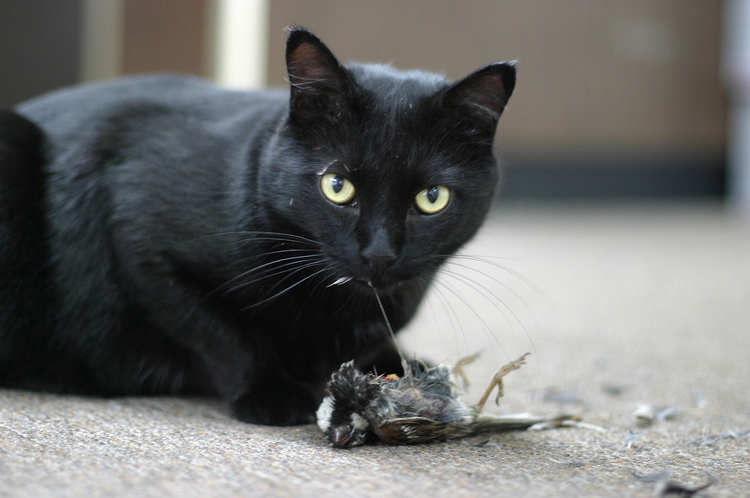Read our Current Hot Topics
What are NZES Hot Topics?
Following hot on the heels of the success of the Hot Topics programme run by the Ecological Society of Australia, the NZES aims to improve communication of science from the conservation and ecological community within Aotearoa New Zealand to the people of NZ. The NZES Hot Topic reports will likewise provide a robust source of ecological and conservation science to counter misinformation and evidence complacency. The programme was established in 2018 as an initiative of the Kauri Fund.
NZES Hot Topic reports are evidence-based communiqués on conservation, environmental and predominantly ecological issues that are currently either in the media, or of interest to a broad cross-section of people from policy makers, land managers, conservation volunteers. NZES Hot Topics aim to provide clear, concise, evidence-based statements that aspire to enhance the nature of scientific debate in New Zealand and objectively inform public discourse on topics of national and regional importance.
As part of the aim of NZES Hot Topics to provide robust, relevant and accessible scientific information, the reports will be maintained as active documents and as such will be updated as and when new evidence is produced by scientific studies.
Hot Topic reports comprise of a one-page / 500 word overview of the issue, synthesising peer-reviewed and published scientific research. Each report is accompanied by a list of (preferably) open-access literature that provides support for the assertions made.
Hot Topics reports are produced in one of two ways: 1) scientists working in the ecological space are contacted by the editorial team to provide expertise on a Hot Topic; 2) NZES members can suggest Hot Topics and submit reports to the editorial team (see below).
NZES Hot Topics is governed by an editorial team consisting of ecologists Tom Etherington and Anna Probert.
Who can use the NZES Hot Topic reports?
Anyone! The aim of these reports is to inform. If you are interested in an ecological / conservation / environmental issue, passionate about a cause, or have heard anyone from neighbour to politician misrepresenting the facts of an issue in discussion or debate, then use this information! Social media links (e.g. twitter icons) are available to readily and easily provide access to the reports. If you have information that you can contribute to a Hot Topic report please forward this to the editorial team.
Who gets to write an NZES Hot Topic report?
Anyone who has specific knowledge and expertise on the subject. This is not limited to the research community. If you have recently undertaken a review of a topic, are knowledgeable on the issue at hand, or simply are passionate about a subject and can produce a short overview of the peer-reviewed literature you are welcome to submit; please contact the editorial team initially to agree on a proposed topic. Contribute facts and evidence to public discourse in a form more accessible to the people of New Zealand than scientific literature.
What will be accepted by the editorial board?
Evidence-based, clear review of peer-reviewed literature. The literature supporting a submitted report does not have to be extensive, three or four articles to provide support will suffice; however, the report must represent the broader literature. Opinion pieces will not be accepted.
Information for submission:
Please provide a 1 page / 500 word overview on a proposed Hot Topic with at least three peer-reviewed scientific documents supporting statements made in the report. Email to the Hot Topics Editors.
Current Hot Topics
Viewing cats through the Overton Window
The recent news that feral cats will be included in Predator Free 2050 targets is a welcome relief for various groups aimed at protecting our indigenous fauna - and may signal changing attitudes around how cats are viewed in Aotearoa New Zealand. However, this represents only a step towards truly safeguarding our indigenous fauna with the goal of no more free-roaming cats. As attitudes in Aotearoa change, new legislation could be considered that prioritises indigenous species over pets.
Can urban greening help make cities more resilient to the ongoing impacts of extreme events?
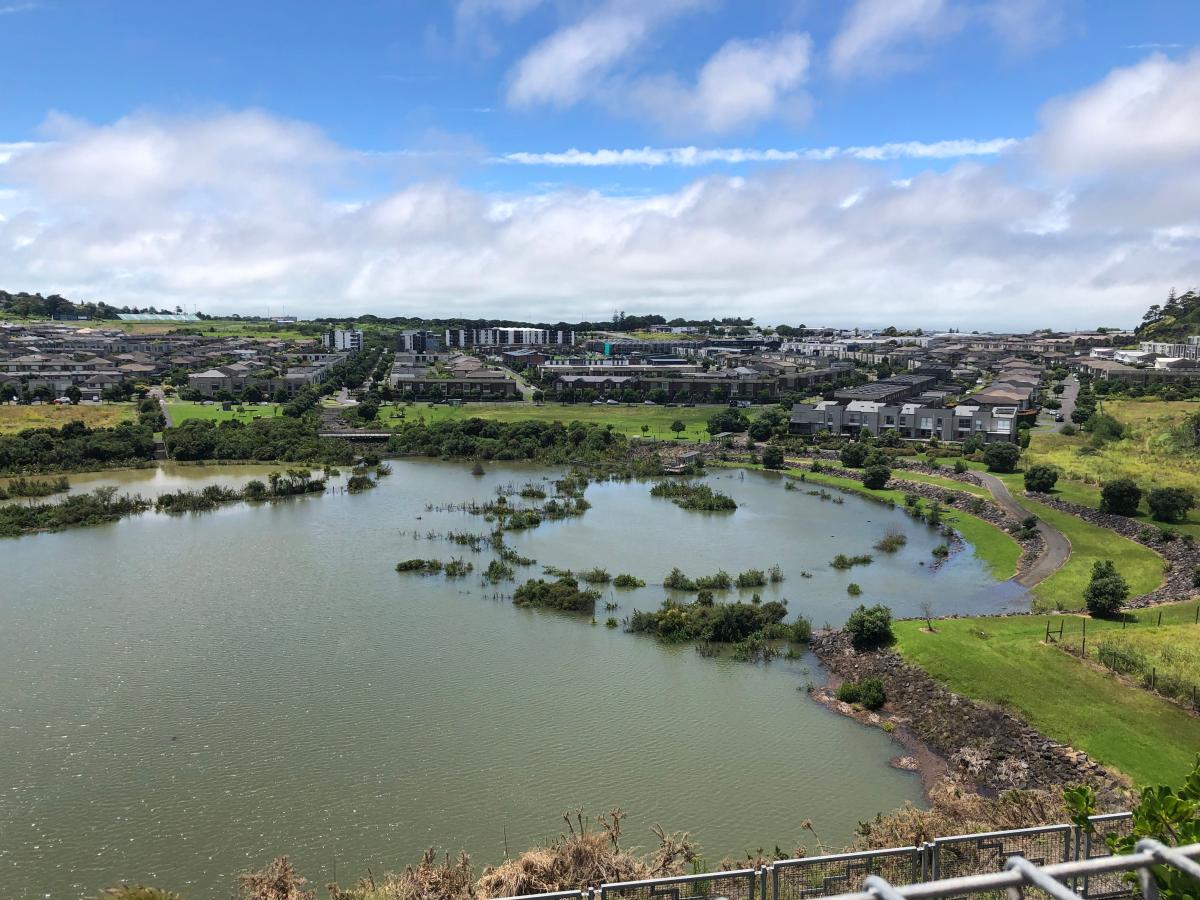
The severe floods in Tāmaki Makaurau at the end of January 2023 were harrowing for people across the city, causing loss of life, homes, and businesses. Extreme weather events such as these are happening more frequently as the climate continues to warm. While mitigation through reducing emissions is beyond urgent, we also need adaptation strategies to make our cities more resilient.
Navigating the shifting landscape of genetics/genomics research to support conservation management in Aotearoa New Zealand
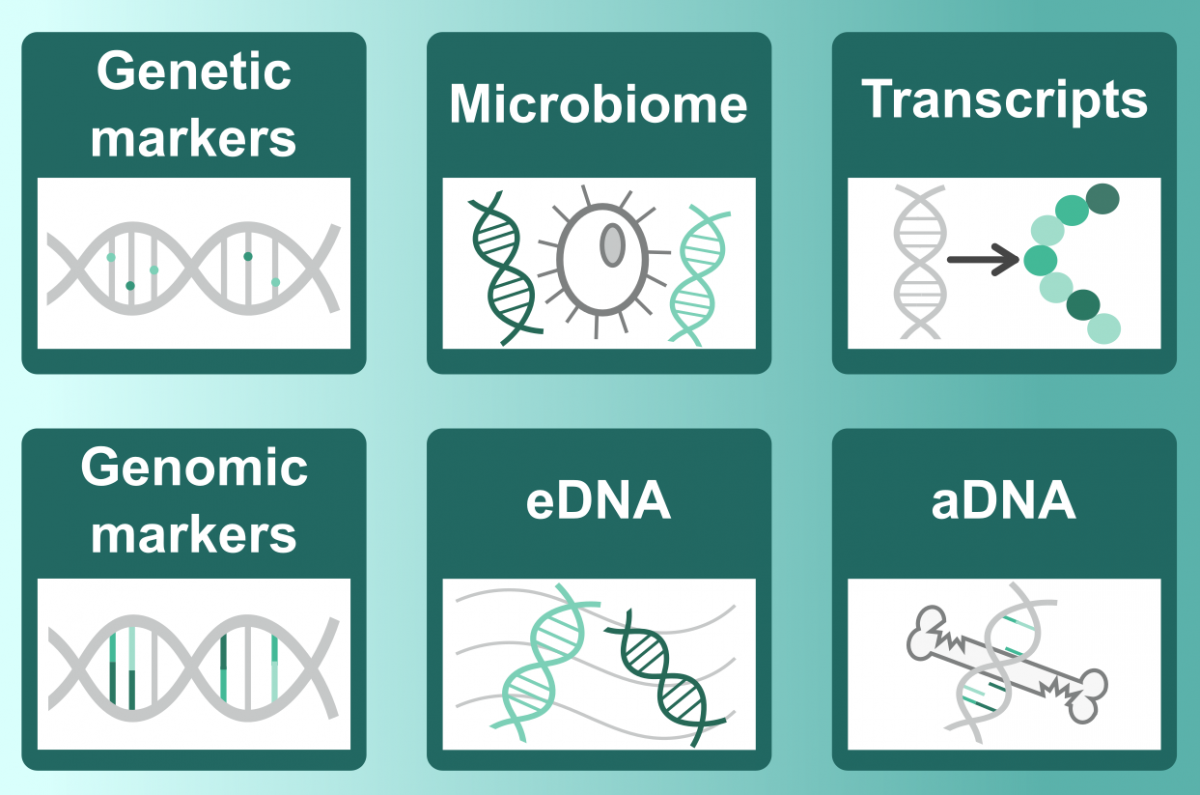
To achieve the vision of thriving biodiversity outlined in Te Mana o te Taiao, Aotearoa New Zealand’s National Biodiversity Strategy, we need to bring together diverse knowledge systems, expertise, and disciplines. Among these is conservation genetics/genomics, which uses characteristics of DNA to inform conservation management. Some characteristics common across small, threatened populations include low genetic diversity (which can restrict a species’ potential to adapt to future changes, like new diseases or warming waters), and inbreeding depression (where breeding between close relatives reduces survival or reproductive success). Both can limit species recovery.
The risks and consequences of a high pathogenic avian influenza outbreak in Aotearoa New Zealand
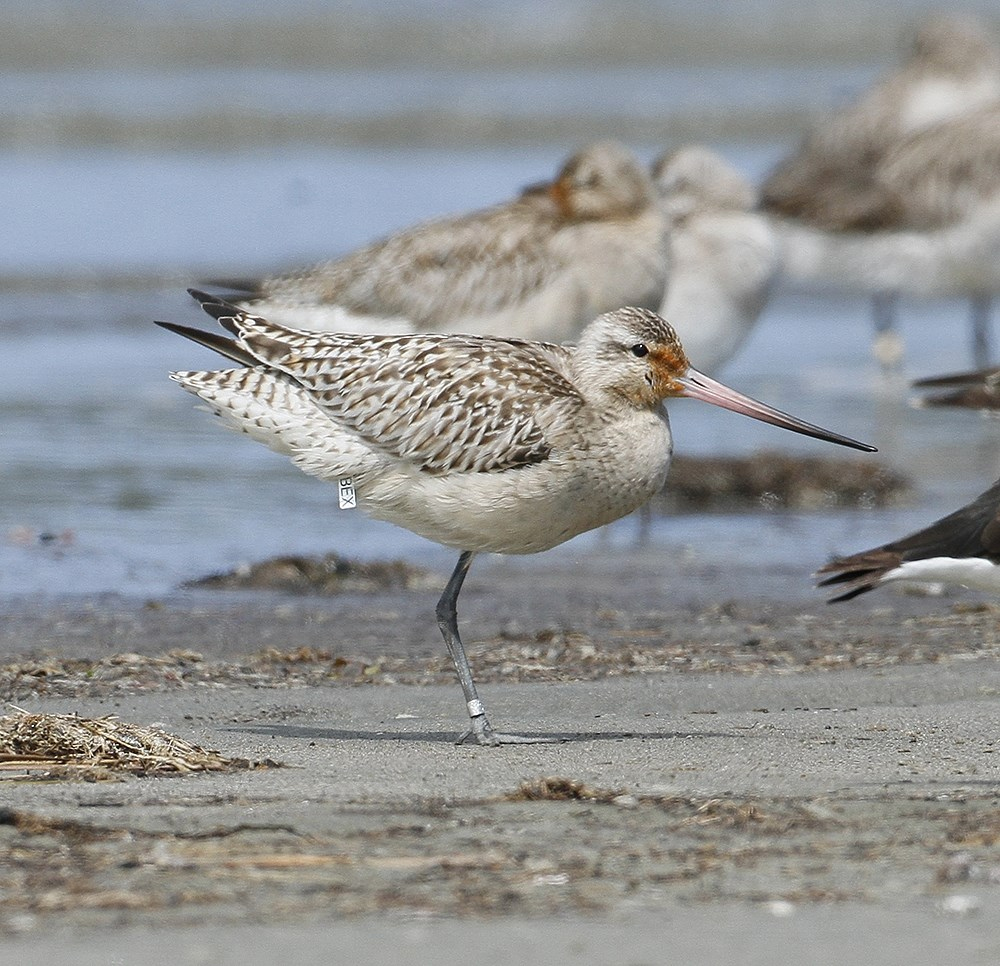
In the last year (2021-2022) there has been an unprecedented mortality of wild birds throughout the Northern Hemisphere due to avian influenza virus. During this period, over 400,000 dead birds have been recorded from over 2600 separate mortality clusters in wild bird populations, however, the actual number of birds affected is estimated to be much higher. Deaths due to this strain of the virus have been reported from almost every country in Europe and have also been found in wild birds in North America and Northern Africa. Many bird species are affected, including cranes, eagles, owls, pelicans and a variety of other seabirds and shorebirds. The virus responsible is a strain of Avian Influenza A(H5N1) that has been circulating in Asia since 2014.
Climate change impacts in Aotearoa: where we're at and where to next

The evidence that the globe is heating up, and that extreme weather events are becoming more frequent and more severe, as a consequence of human actions is now irrefutable. Climate change is recognised by the Intergovernmental Science-Policy Platform on Biodiversity and Ecosystem Services (IPBES) as one of five key drivers of biodiversity loss globally and is causing atmospheric and oceanic warming, sea-level rise, increased CO2, change in rainfall patterns, and loss of snow and ice cover. In some ecosystems, impacts on biodiversity are direct and mechanisms are relatively well understood. Take coral bleaching on the Great Barrier Reef, and most recently in Doubtful Sound (Fiordland), for example. Coral bleaching involves a breakdown of the symbiotic relationship between corals and algae, which is very sensitive to changes in the physical and chemical environment surrounding the corals. Short periods of high temperature disrupt the symbiosis, resulting in the loss of the brown symbionts and hence the “bleaching”. Further, our oceans are becoming more acidic, decreasing the rate at which marine organisms—like corals—build their calcareous structures. However, for many species and ecosystems, our understanding of mechanisms by which a changing climate is impacting biodiversity is in its infancy.
Balancing ecological and social conflicts for the effective management of Himalayan tahr
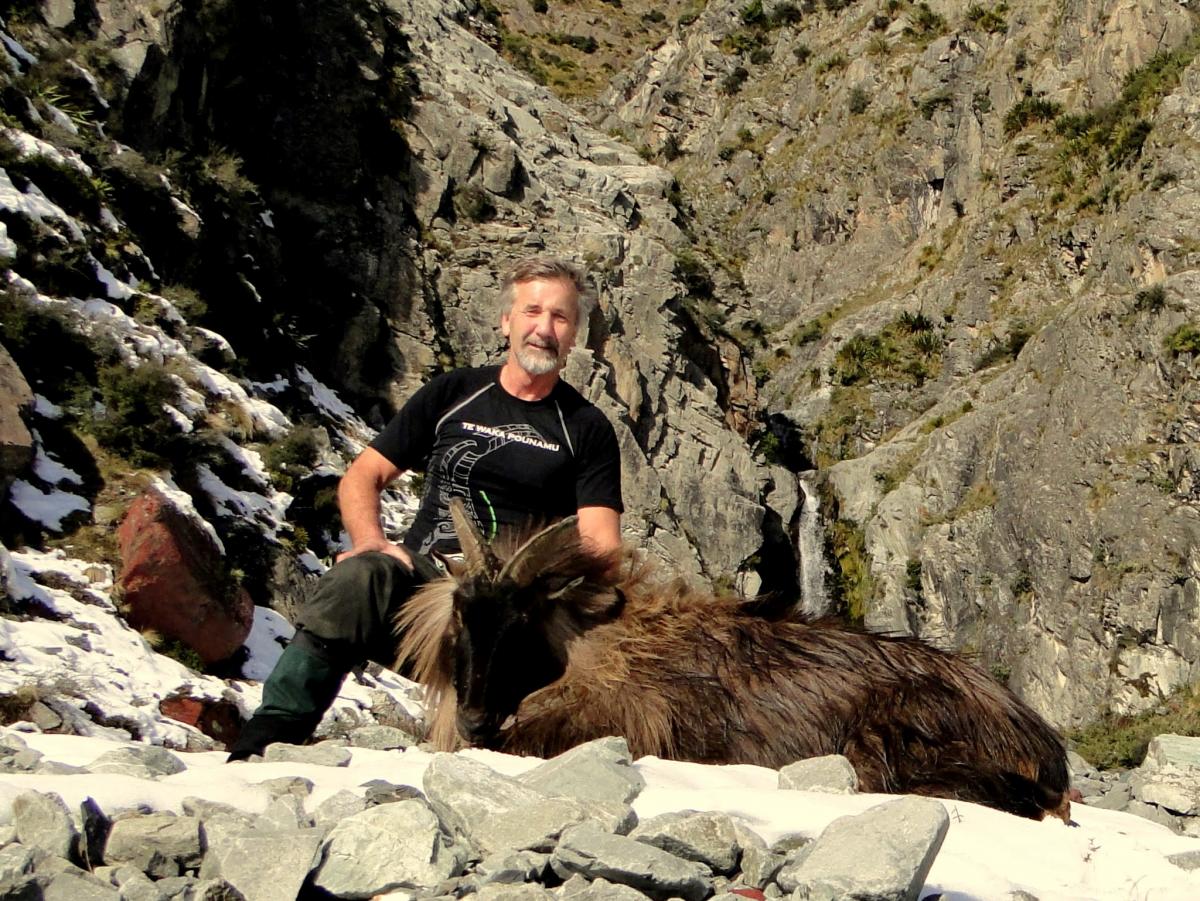
Thirteen Himalayan tahr/thar (Hemitragus jemlahicus) were introduced to New Zealand via the Duke of Bedford’s estate in Norfolk over two events in 1904 and 1909. Despite these two bottlenecks, tahr were highly successful, reaching a population size of tens of thousands as they spread over the central Southern Alps.
Since 1993, tahr have been managed under a formal plan developed by the Department of Conservation (DOC). The plan evolved after the tahr population decreased, by about an order of magnitude, between 1971 and 1983—following the development of a commercial market for their meat that harvested over 39,000 individuals.
Sound from recreational boats is a widespread pollutant in the Hauraki Gulf/Tīkapa Moana
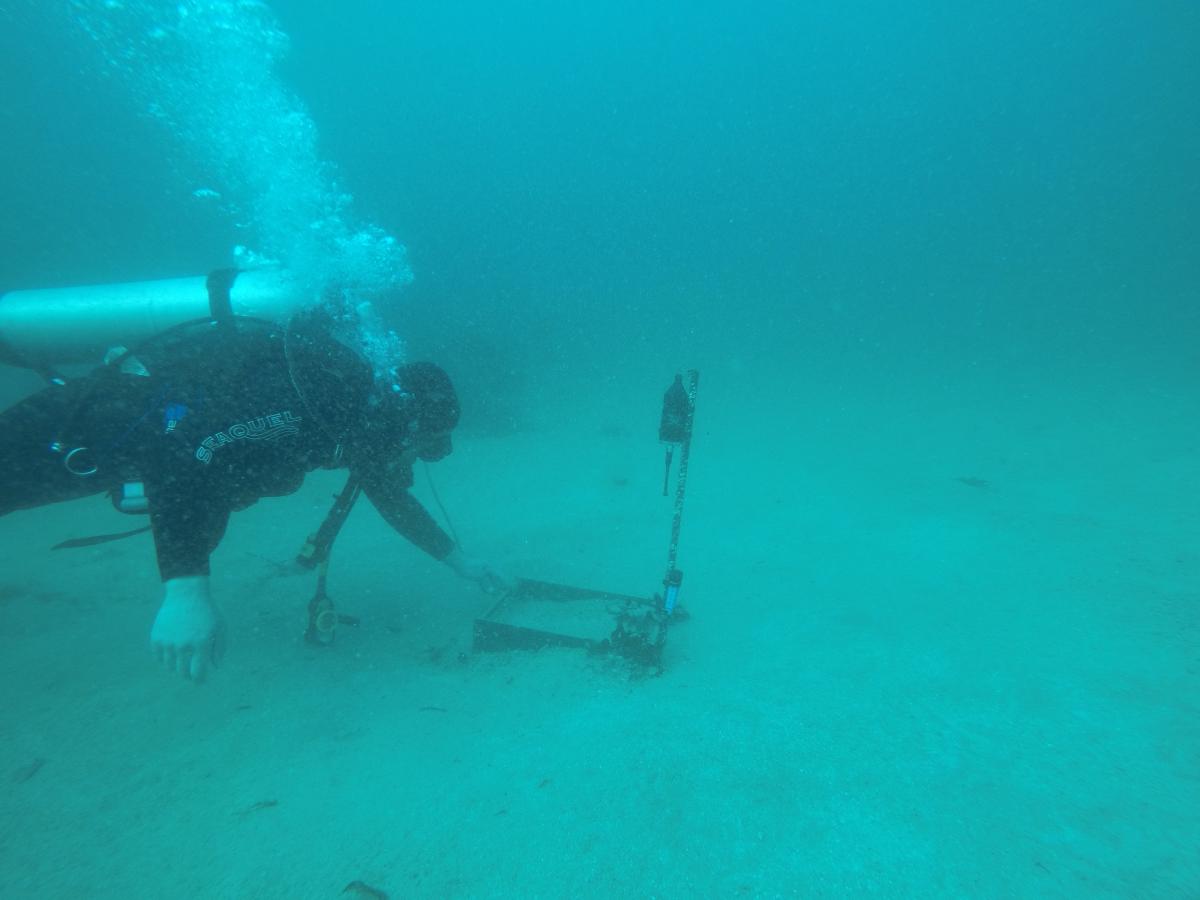
Sound is an important communication channel for many species living in environments where visibility is often low. Underwater, sound travels four to five times faster than in air and is used by invertebrates, fish, and mammals to carry out essential behaviours such as navigation, mating, and shoaling. Sound can also facilitate the detection of prey and the avoidance of predators. However, sound pollution can mask these cues, impacting the ability of individuals to transmit and receive information and affecting important life history functions. For example, research in British Columbia has found that sound from human sources elevates sound pressure levels within rockfish conservation areas, overlapping with the frequency band at which these fish vocalize. These vocalizations are thought to play a role in spawning and so masking of these cues has clear implications for this overharvested species. For the most part, our understanding of how sound pollution affects marine animals is limited, with most of the existing research being focused on the impacts of large commercial vessels in the open ocean. The extent to which small recreational boats contribute to sound pollution has only just started to get more attention.
RNAi: a novel tool for vertebrate pest management in Aotearoa New Zealand?
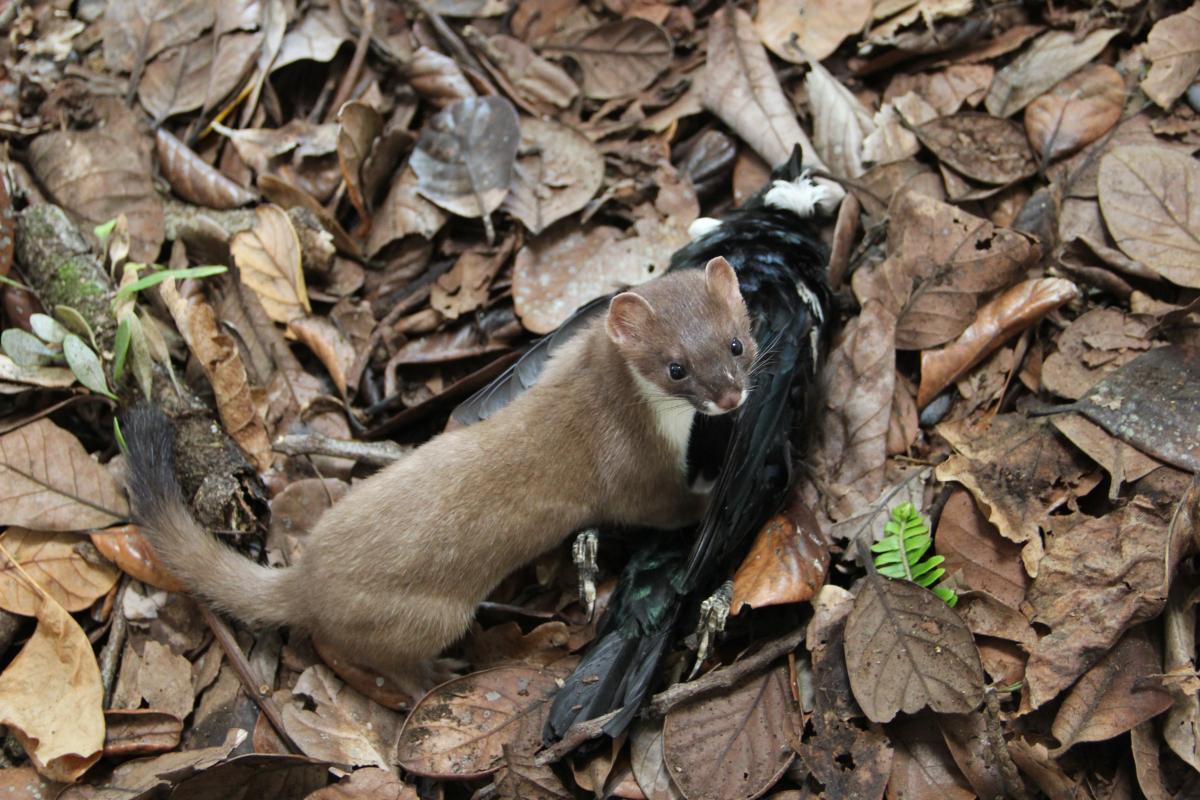
The development of RNA-based vaccines against the virus causing COVID-19 has highlighted the use of RNA as a tool in solving complex biological problems. One major conservation issue facing Aotearoa is the eradication of mammalian predators (possums, mustelids, and rats) by 2050. The Predator Free 2050 target is challenging as current tools have limitations. No trap is efficient enough to remove 100% of individuals, and our currently available toxins are broad-spectrum; therefore, there are risks to non-target species, and social acceptability issues. The development and application of new vertebrate pest control tools is therefore critical to help us achieve our conservation goals. Although RNAi is still in the exploratory, proof-of-concept stages for vertebrate pest control, this article explores the possibility of leveraging the cellular processes of RNA interference (RNAi) for the development of a new generation of control tools that are pest-specific.
Ecological damage from microplastic pollution - horror or hyperbole?
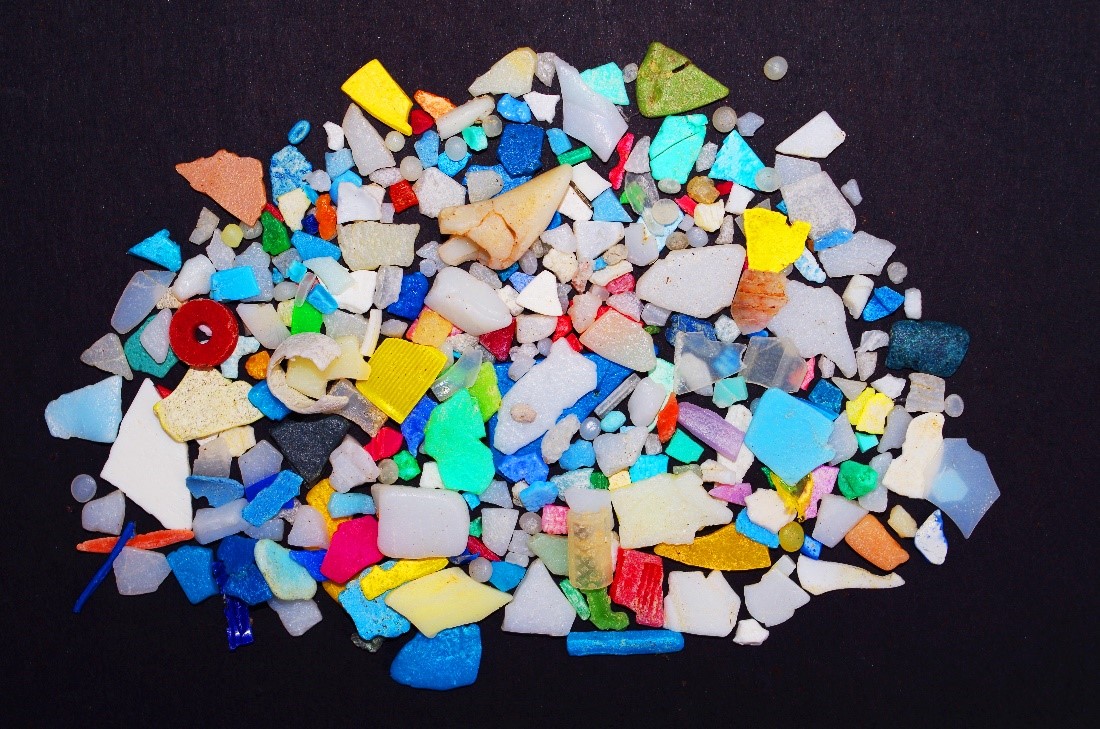
Plastic in the environment has been accumulating rapidly since mass production began in the 1950’s and concern has grown recently over the environmental damage it may cause. Plastic pollution is now variously described as an ‘Armageddon’, ‘Tsunami’, or ‘Crisis’ of plastic in popular press. This has led to exponential growth in research focused on plastic, particularly smaller ‘microplastics’, in the past decade. But what do we actually know about the ecological effects of microplastic pollution?
Whitebait conservation in light of recent fishing reforms
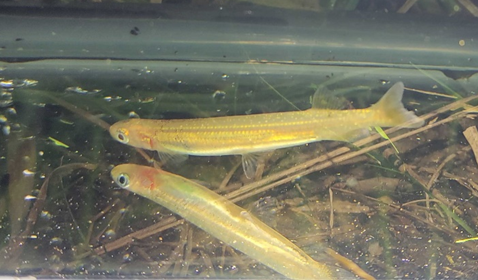
In Aotearoa, whitebait refers to the juveniles of five species of freshwater galaxiid fish. The fish are caught by whitebaiters in spring as they return from the sea to rivers to complete their lifecycle. Four out of the five species are classified as declining or worse, and there has been growing concern over the fate of each of the species. In response to this concern the government has recently tightened whitebait fishing regulations.
The plastic tide is turning
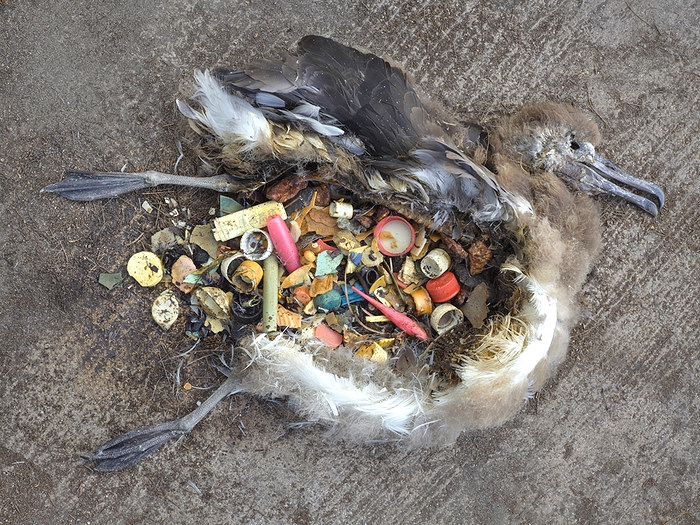
This year’s Plastic Free July will mark 10 years of a global movement to raise awareness about the problems that plastic pollution has on our marine and terrestrial ecosystems, biodiversity and communities. It was seabirds that were some of the first messengers of problems of plastic in our oceans.
The underserving and under-representation of Māori scientists in New Zealand’s science system
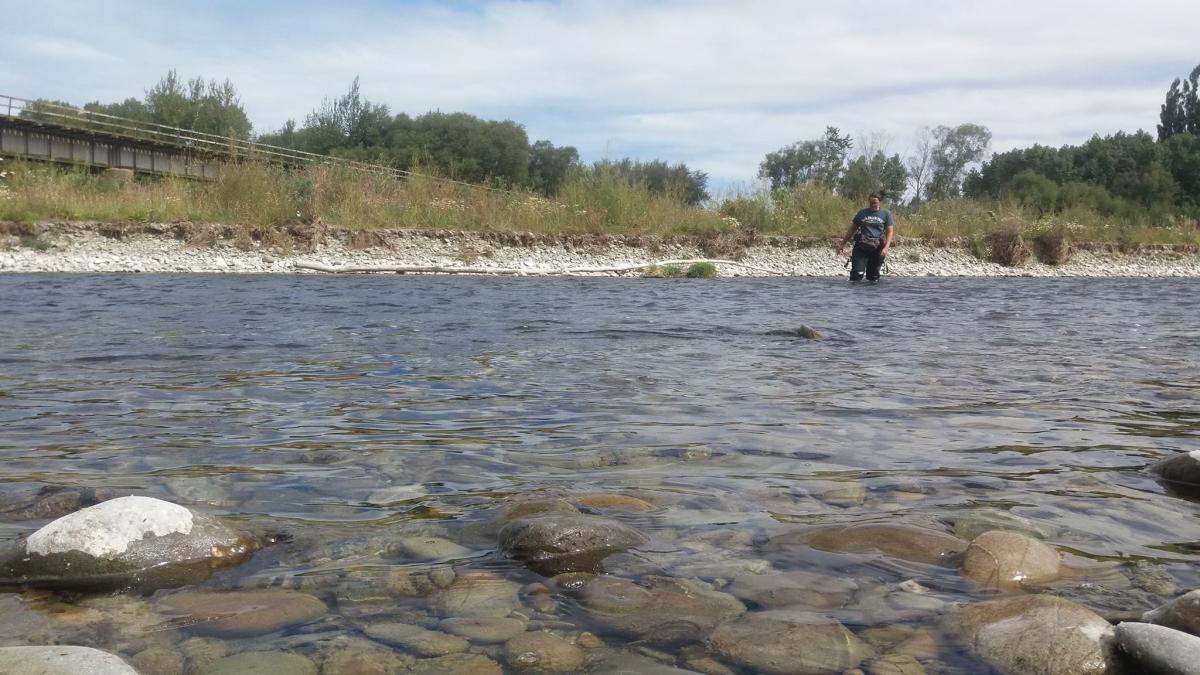 \
\
Māori scientists are severely under-represented in the publicly funded science sector, including universities and crown-research institutes (CRIs). Between 2008 and 2018, Māori comprised only 0–8% of the scientific workforce employed in these organisations. Shockingly, one university failed to employ even a single Māori scientist over a period of 11 years, despite increasing numbers of Māori obtaining degrees in higher education (Table 1). This indicates that universities and CRIs are failing to build a sustainable Māori workforce and highlights that despite espousals of valuing diversity, that they continue to ignore their obligations outlined in Te Tiriti o Waitangi. Although in Aotearoa, leaders within the science sector often state that Māori have low participation in science, this is an inaccurate assertion. Rather, Māori are actively and passively excluded from the science system due to colonialism, institutional racism and the continued privileging of western knowledge and non-Māori researchers.
Indigenizing agroecology in Aotearoa

There is increasing recognition worldwide that native biodiversity plays a vital role in building agricultural ecosystem resilience. Kaitiakitanga is a key principle from the Māori world view to assist in sustaining native biodiversity in New Zealand landscapes. However, we argue that in agricultural landscapes, kaitiakitanga alone cannot achieve desired biodiversity outcomes. Like kaitiakitanga, agroecology is a holistic pathway for incorporating ecological and social processes into the management of agricultural landscapes using methods that will protect the land, biodiversity and consequently the people. In addition to kaitiakitanga aspirations of sustaining land and resources, our primary question is what is the innovation within mātauranga Māori (Māori knowledge) that might also lead to enhanced yields and increased profits for all?
One Billion Trees: an opportunity for (re)building resilient and multi-functional agricultural landscapes
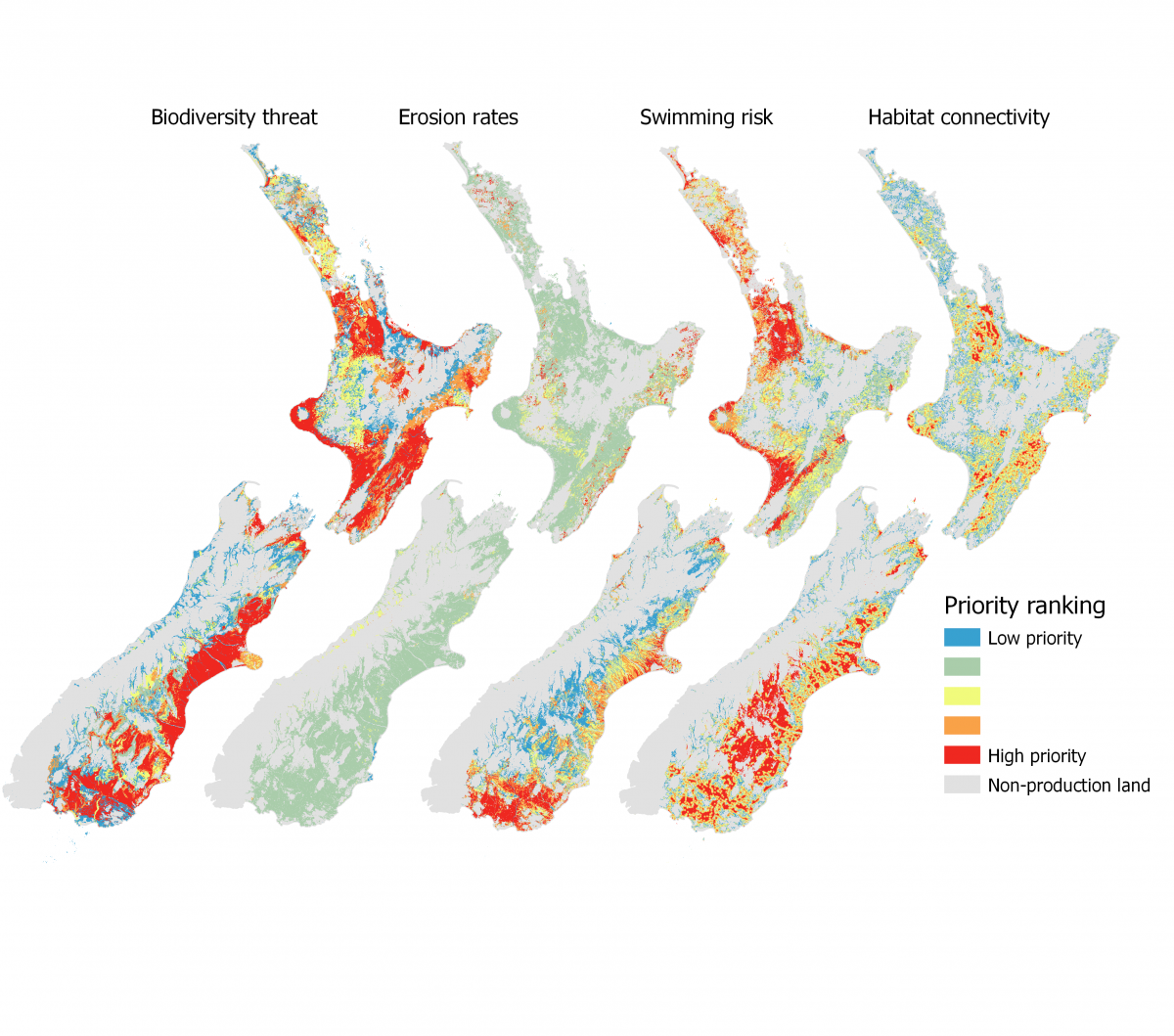
The One Billion Trees (1BT) programme was launched in early 2018 by the newly-established Te Uru Rākau/Forestry New Zealand with the goal of planting one billion trees by 2028. This initiative aims to use reforestation to improve land productivity, provide alternative incomes (e.g. tree and carbon farming, honey production), and improve water quality, biodiversity, habitat provisioning and carbon sequestration. In parallel, the government has the goal of making New Zealand Carbon neutral by 2050 and will be aiming to address the current biodiversity crisis via a revamped Biodiversity Strategy in 2020.
Threats to New Zealand's dryland ecosystems
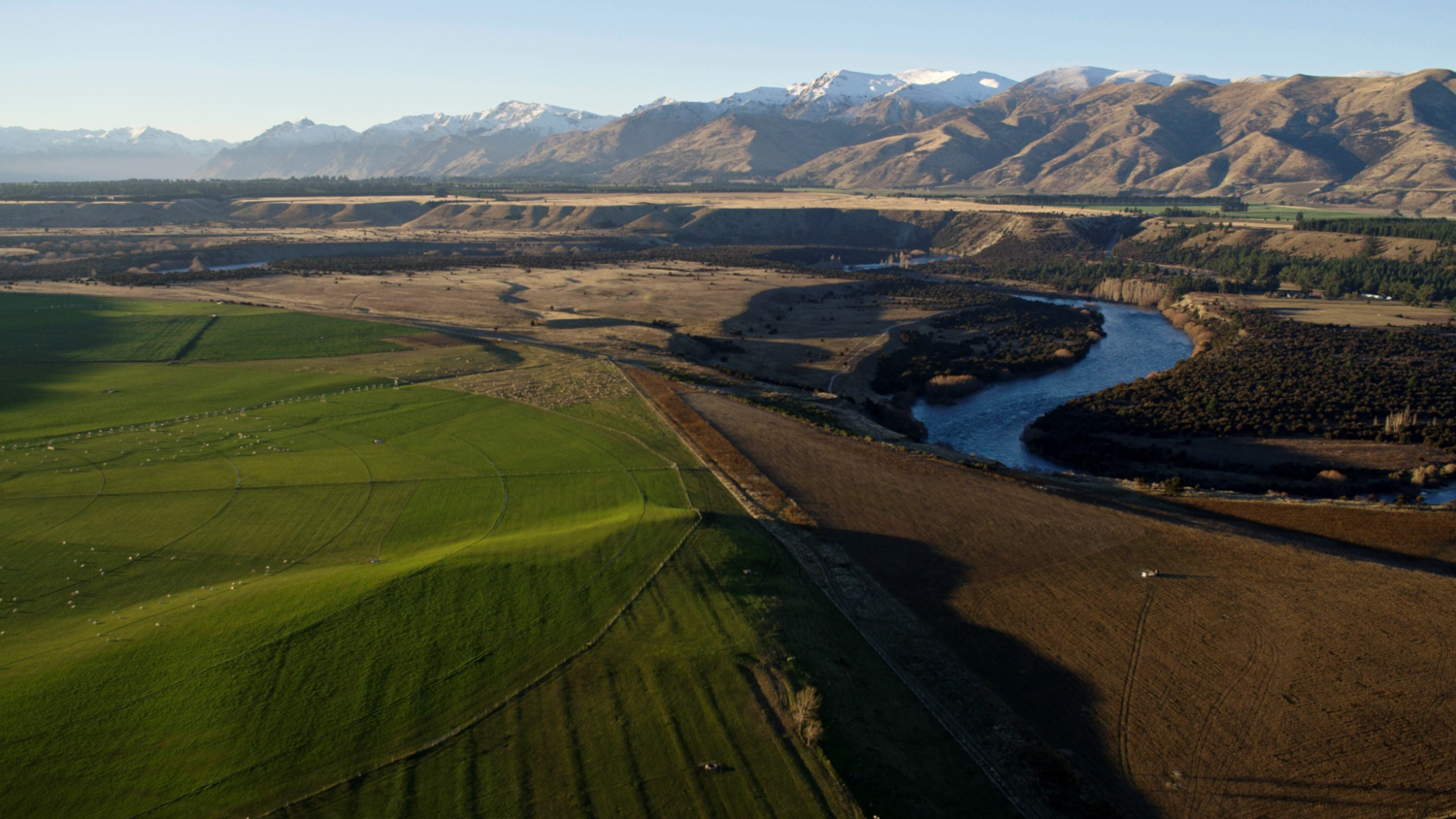
Recent land clearance has laid waste to native ecosystems across significant areas of the inland South Island, destroying already tenuous endemic species populations and creating a major conservation burden for future generations. Ecological research to identify, measure, understand, and communicate the effects of land use change is essential to halt and turn the tide.
Cats and biodiversity (in NZ)
Regardless of how well-fed they are, cats kill wildlife and are also a source of disease (e.g., toxoplasma) that can kill native species and affect human health. Feral cat management is not currently contentious in New Zealand, although some felt it was wrong to exclude cats from the Predator Free New Zealand 2050 vision, even in the face of anticipated strong social opposition. However, management of stray and pet cats is certainly a problem.

